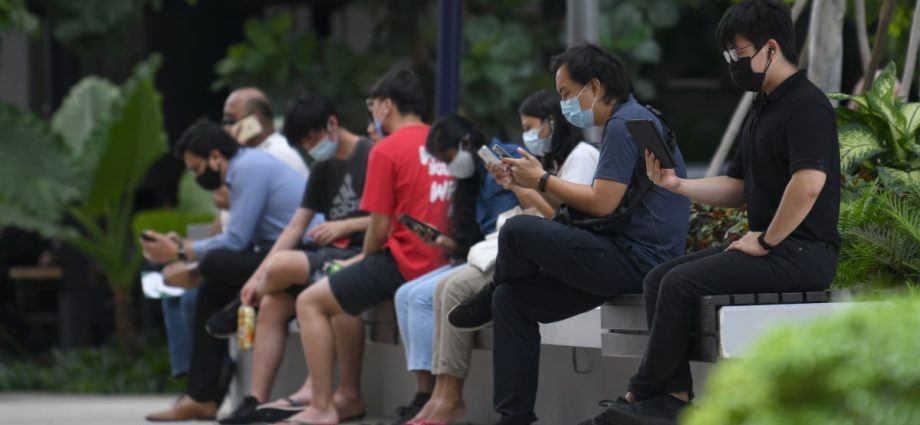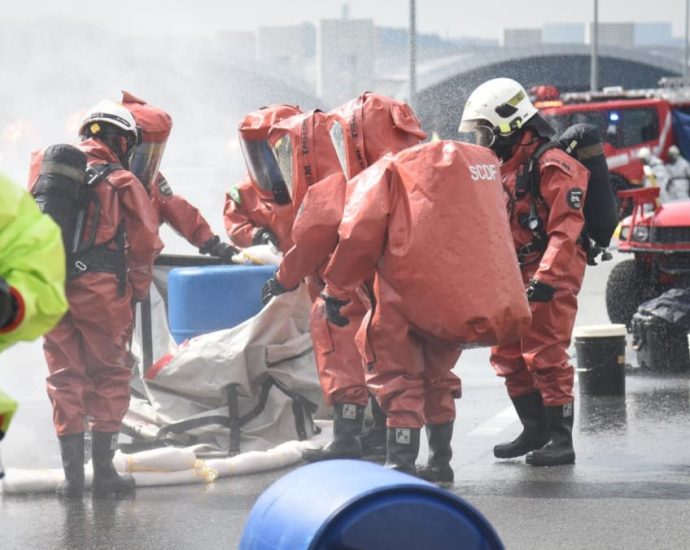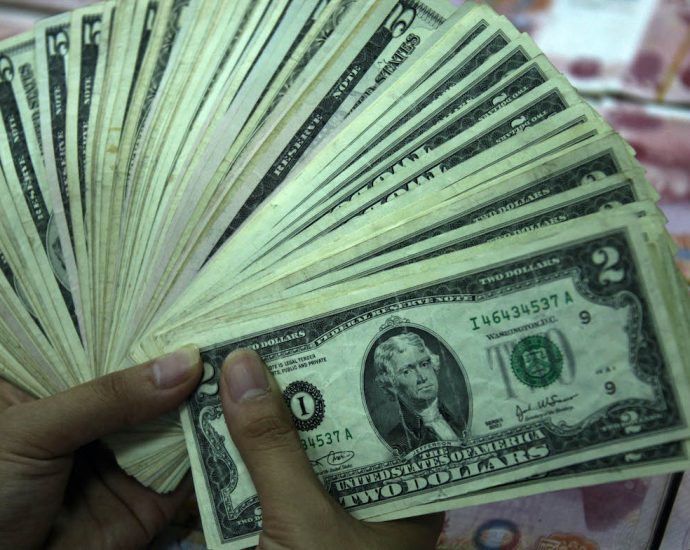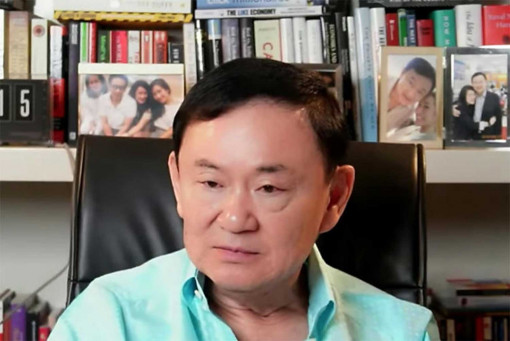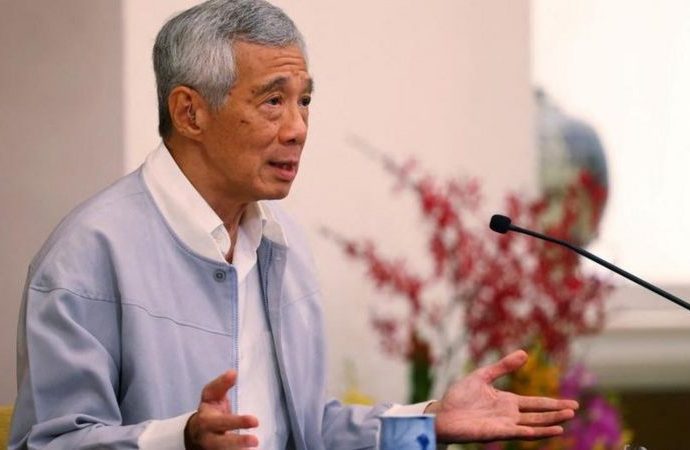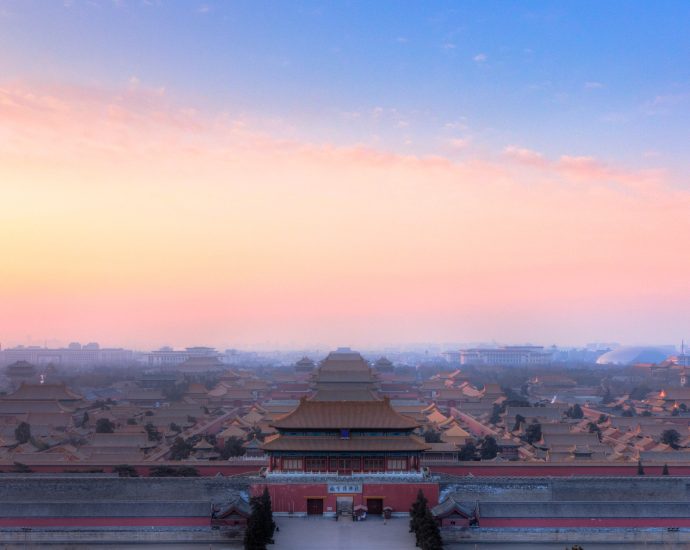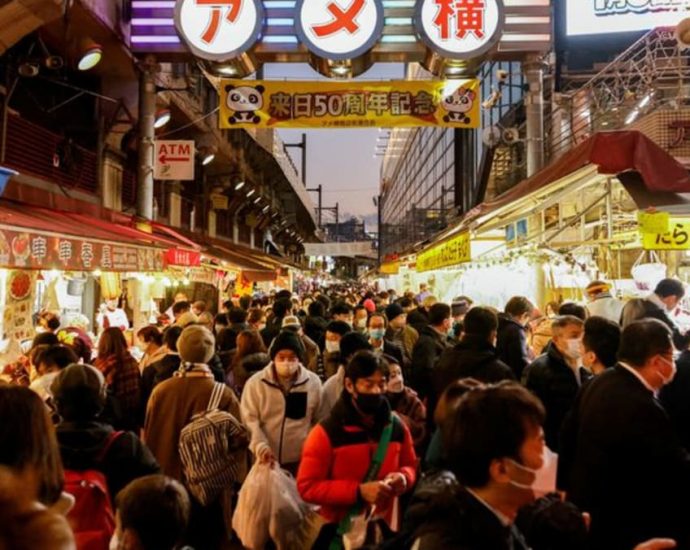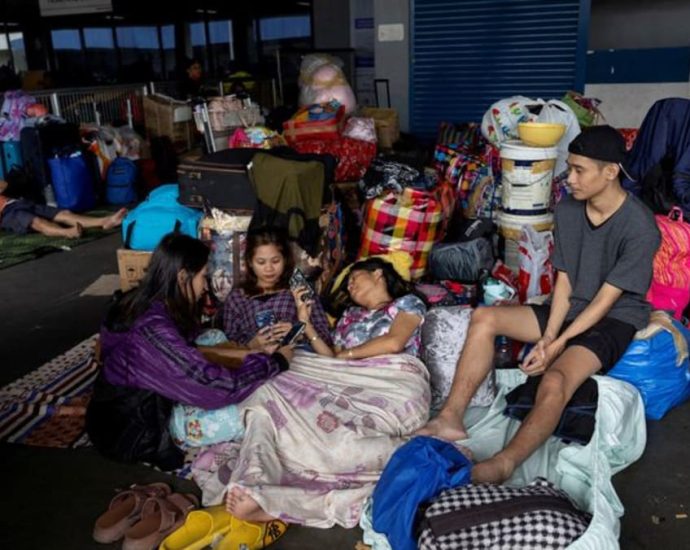Singtel, StarHub and M1 to retire 3G services by end-July 2024
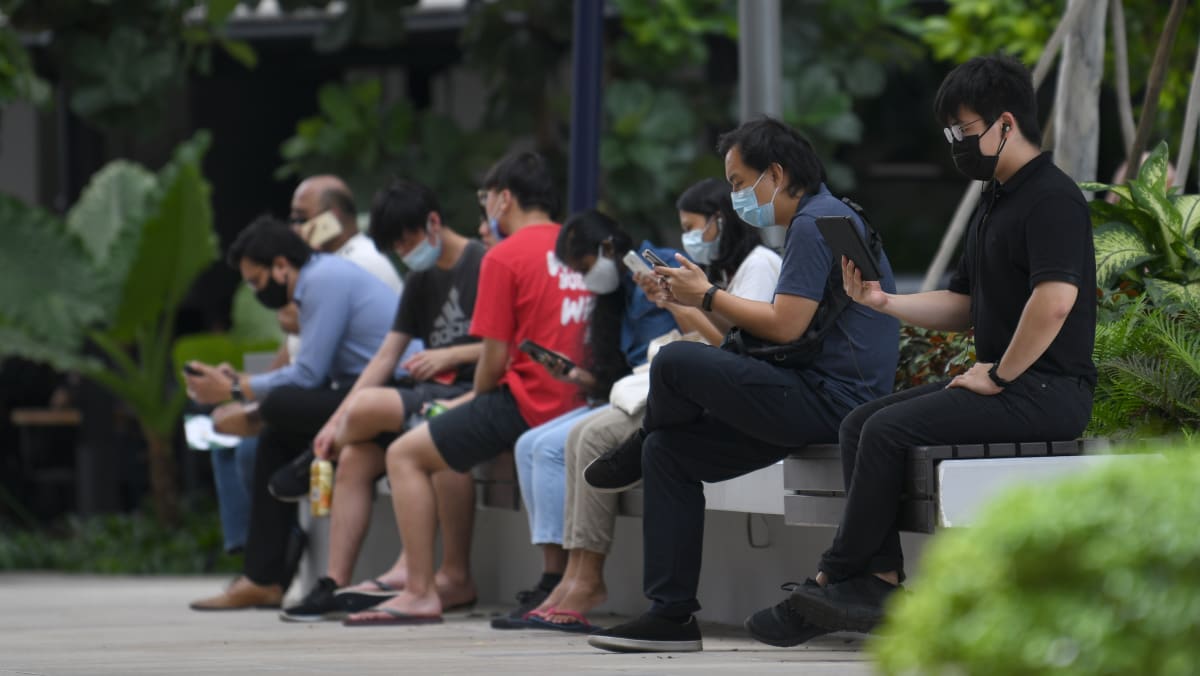
SINGAPORE: Mobile network operators Singtel, StarHub and M1 will retire their 3G services by Jul 31 next year.
These three telcos are currently the only mobile network operators offering these services.
The Infocomm Media Development Authority (IMDA) said on Wednesday (Jul 26) that the move is in view of advancements in the mobile communication space where 3G has been largely replaced by 4G and 5G.
IMDA added that the one-year transition period was to allow operators to adequately engage and migrate their remaining 3G subscribers before retiring their 3G services.
To facilitate this transition, mobile network operations will offer individual users the option to convert to 4G plans “on terms that are no worse-off”. A range of mobile phone options at different price points will also be provided.
For enterprise users, support will be given to help them migrate to 4G or other alternative services while minimising disruption to their existing services.
IMDA also said retailers will no longer be able to sell 3G mobile phones or 4G models requiring 3G for voice calls, except for export purposes. This will take effect from Feb 1, 2024.
Those affected can contact their respective telcos for more information and assistance.
3G entered the Singapore market almost 20 years ago, and the next wave of 4G developments took place in the mid-2010s.
Since the introduction of 5G last year, 5G subscriptions have gained prevalence – making up 15 per cent of the total mobile subscribers. IMDA said this number continues to grow.
“Overall, close to 99 per cent of Singapore’s mobile subscribers are currently on 4G or 5G,” it said, adding that as of April this year, the 3G subscriber base makes up about 1 per cent of the total mobile subscription, with the number on the decline.
Internationally, operators such as those in Australia and the UK are similarly expected to retire their 3G services by 2024, said IMDA. Some countries such as the US and Malaysia have already retired 3G services.
“When the 3G networks retire, more spectrum can be released for investment in 5G to provide a better experience for users and support enterprises undergoing digital transformation,” it added.
How a chemical spill on the Tuas Second Link gets contained
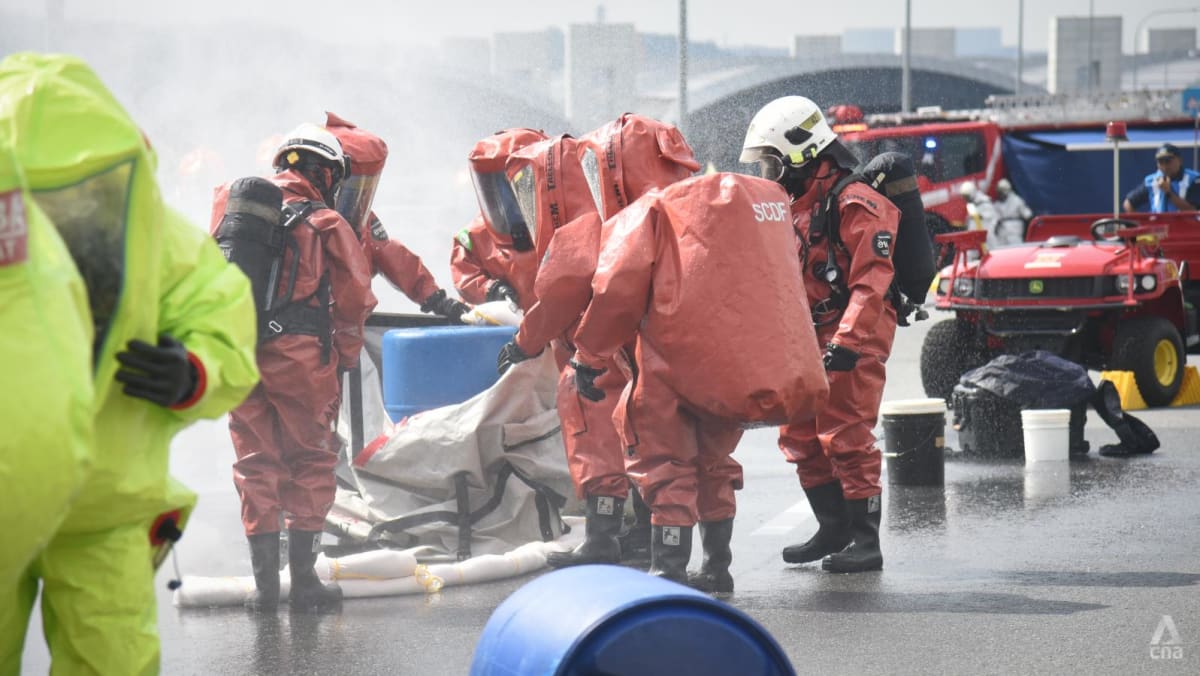
The scenario, which took place across lanes cordoned off from busy traffic, involved an accident among vehicles moving towards Singapore.
A motorcycle and a car collide in front of a lorry carrying 10 drums of hydrochloric acid. To avoid hitting them, the lorry driver swerves, losing control and hitting a barrier wall.
The impact knocks five drums of hydrochloric acid onto the road. Two drums on Singapore’s side rupture, spilling hydrochloric acid. Three drums roll to Malaysia’s side, with two similarly rupturing.
Concentrated hydrochloric acid is corrosive and can cause burns. Inhalation of the vapours can also cause coughing, choking, inflammation of the respiratory system, fluid in the lungs, circulatory failure and even death.
Chipping away at US dollar dominance

There is undeniable excitement about challenges to the American dollar’s position as the global reserve currency.
While economists have warned for years that the dollar’s dominance shouldn’t be a foregone conclusion, few have paid close attention to the warnings, especially in the halls of American power.
After Russia invaded Ukraine and US sanctions failed to deliver a decisive blow against the Russian economy, new questions emerged about how the global economy grew beyond America’s grip.
These discussions have reached a fever pitch in debates about the creation of a BRICS currency. The BRICS – a grouping of the economies of Brazil, Russia, India, China and South Africa – represents an alternative to Western-controlled international organizations such as the World Bank and International Monetary Fund.
Together, these economies represent a vast swath of the global economy, and their influence extends to areas beyond the American purview in the Global South. Creating a shared currency in these economies would upend international trade and represent a clear challenge to the dollar as the world’s reserve currency.
But this article isn’t about a BRICS currency, because we are far from its creation. Instead, we must recognize that discussion about a BRICS currency overshadows more significant developments quietly chipping away at the dollar’s current dominance.
This month, India and the United Arab Emirates agreed to use their local currencies for cross-border transactions. On the surface, this might not seem particularly important. Countries trade in their local currencies all the time. However, this small development is laying the foundations for dramatic changes in the near future.
Trade between India and the UAE is booming. From April 2022 to March 2023, bilateral trade was US$84.5 billion. Oil drives this, as India is one of the world’s largest oil importers and consumers.
The UAE is also the second-largest source of remittances for India. Remittance payments – money sent back home by Indians working outside the country – are vital to the Indian economy. In the 2021-22 fiscal year, India received close to $90 billion in remittance payments, the highest on record for the country.
Disempowering the petrodollar
Remittance payments and oil sales have been conducted in US dollars for decades, but with the new focus on trading in local currencies, there is a clear shift away from the dollar. One official told Reuters that India is preparing its first rupee payment for Emirati oil to the Abu Dhabi National Oil Co in the coming months.
Part of the power of the US dollar as a global reserve currency is how it is used for transactions between countries like the UAE and India. This is especially clear in the oil trade, given that oil is almost universally traded in dollars.
If the US wants to punish the geopolitical decisions of other countries like Russia, it can exercise its control over the dollar in the oil trade. This is one reason China has been actively investing in Saudi Arabia.
As part of its years-long push to break the oil trade’s reliance on dollars and shift it to the yuan, China has been on a charm offensive in Saudi Arabia. China has even floated the idea of a free-trade agreement between the two nations, attempted to buy a minority stake in Saudi Aramco, and welcomed the kingdom’s multibillion-dollar investments in China.
The closeness of the relationship has worried the US, but President Joe Biden’s administration has proved unable or unwilling to stop China and Saudi Arabia from moving closer together.
Saudi Arabia has also been leveraging its position as a primary supplier of crude oil to India for its geopolitical ambitions of carving out a genuinely independent foreign policy.
These developments might seem small taken by themselves, but viewed together, it’s clear that a profound shift is taking place in the global economy. Without the creation of a BRICS currency, major economies of the Global South are forging partnerships that will allow them to move their economies off the US dollar.
In another part of the world, Brazil and Argentina are discussing the creation of a common currency. While these plans might seem pie in the sky right now, a foundation is being laid that will seriously challenge the dollar’s dominance.
The US needs a new strategy to contend with these challenges coming down the pike, and so far, it’s hard to detect one in Washington.
It’s essential to see the forest beyond the trees. The dollar isn’t going to be killed off by one contender currency like a BRICS currency. It will lose its power and dominance thanks to small steps taken by countries that prefer to determine their affairs without the influence of a global reserve country.
As the world’s second-largest economy, China is helping other countries like Saudi Arabia push their visions for global power. It’s all happening in real time. You just have to look at the details.
This article was provided by Syndication Bureau, which holds copyright.
Thaksin to return on Aug 10
PUBLISHED : 26 Jul 2023 at 11:33

Former prime minister Thaksin Shinawatra is set to arrive at Don Mueang airport on Aug 10, his daughter Paetongtarn “Ung Ing” Shinawatra announced on Instagram on Wednesday.
“I can’t quite believe what I am typing, my father is returning on Aug 10 at Don Mueang airport,” Ms Paetongtarn wrote on her father’s 74th birthday.
According to the Pheu Thai Party’s prime ministerial candidate, she had missed only three of her father’s birthdays, with the latest one being this year, as there were many preparations to be made.
“(Our family) is both glad and worried, but we always respect our father’s decisions,” Ms Paetongtarn wrote.
She extended her best wishes to her father, hoping for his good health and safety, and that he could fulfil his wish of regularly sending his grandchildren off to school.
Ms Paetongtarn also wrote that her father was a prime minister who was recognised for having the most national contributions, but he also faced hardships and mistreatment.
Thaksin had mentioned his plan to return to Thailand since early last year, she wrote.
Since being overthrown by a military coup on Sept 19, 2006, Thaksin has been living in self-imposed exile, except for a brief visit to the country in 2008. During his absence, the Supreme Court’s Criminal Division for Holders of Political Positions sentenced him to a total of 12 years in prison in four cases.
In the first case, Thaksin was found guilty of abuse of authority in his then-wife Khunying Potjaman na Pombejra’s purchase of state-owned land in Ratchadaphisek at a price below the market value, resulting in a two-year prison sentence. The 10-year statute of limitations on the court ruling expired in October 2018.
The second case led to a two-year prison sentence for the fugitive former prime minister, as he was found guilty of malfeasance in connection with the two- and three-digit lottery case.
In the third case, Thaksin received a three-year prison sentence for abusing his position by authorising 4 billion baht in loans to Myanmar through the Export-Import (Exim) Bank of Thailand. The funds were used to purchase equipment from a telecoms firm owned by his family.
The fourth case resulted in a five-year prison sentence for him, as the court found him guilty of using nominees to hold shares in Shin Corp, a telecommunications company, which is prohibited for any political office holder.
The statutes of limitation for the court decisions on the second, third and fourth cases have not expired.
Record number of marriages, fewer divorces in Singapore in 2022
There was also a decline in the dissolution rates before the tenth marriage anniversary among resident marriage cohorts after 2005, said the Department of Statistics. The cumulative proportion of marriages that dissolved before the tenth anniversary declined from 17.0 per cent for the 2005 marriage cohort to 14.5 per cent for theContinue Reading
Singapore corruption scandals a ‘setback’ says deputy PM

Singapore’s government will work “doubly hard” to regain public trust after a spate of recent political scandals, its deputy PM tells the BBC.
Lawrence Wong acknowledged damage to the ruling party from a corruption probe and MPs’ extra-marital affairs.
He told the BBC’s Newsday programme: “The incidents are a setback for the ruling party and the government”.
But he dismissed criticism his government had not been transparent with the public or accountable.
“We have been upfront about the cases, investigated them thoroughly and [are determined to] have a full accounting to the public,” Mr Wong said.
Singapore prides itself on its reputation for clean governance. The city-state of five million is seen as a business and legal hub in Asia.
Its political leaders are also the best-paid in the world, with the highest government salaries.
However in recent weeks, the city-state’s residents have been rocked by cases involving a senior minister’s arrest in a corruption probe, as well as two lawmakers’ resignation over an extramarital affair.
Mr Wong acknowledged the public frustration over a perceived delay in revealing the arrests of Transport Minister S Iswaran and billionaire hotelier Ong Beng Seng – who are at the centre of a corruption probe. The minister has been released on bail and placed on leave.
Mr Wong said the watchdog had chosen to reveal the arrests three days after they had taken place due to “operational considerations”.
He reiterated the Corrupt Practices Investigation Bureau’s standing as a completely independent organisation.
“I believe Singaporeans have full trust in the work of the CPIB. Throughout our history, the track record is clear and evidence for all to see. We have zero tolerance for corruption,” he said.
In June, the watchdog was also involved when two senior ministers were accused of improper access in the property market. They were cleared by the CPIB in a case review.
Political analysts say the events could dent support for the long-ruling People’s Action Party, which has been in power since 1959 and holds 83 of 93 seats in parliament.
Two of those seats are vacant after a pair of MPs, including the Speaker of the Parliament resigned over their extramarital affair.
Such impropriety scandals have stained the government’s reputation.
“To be clear, we set high standards for propriety and personal conduct. But in dealing with such cases, which are cases of human frailties, we are also very cognisant of the impact that our actions have on innocent parties, including families, especially the spouses and their children,” Mr Wong said.
Singapore’s Prime Minister Lee Hsien Loong had said last week he found out about the affair between former Speaker of Parliament Tan Chuan-jin and fellow lawmaker Cheng Li Hui sometime in 2020, and that Mr Tan had resigned in February this year. This led Singaporeans to question why this information was only disclosed to the public recently.
The city-state faces a presidential election later this year – an executive role long aligned with the party in power. A general election for government must be held by November 2025.
Mr Wong told the BBC that he would “work doubly hard” to re-earn the trust of Singaporeans, but did not elaborate on how.
“If I do have a chance to take over [leadership of the country], I know that it’s not just about me taking over because I also have to earn that trust from Singaporeans themselves. I have to win their confidence and mandate to lead the country,” he said.
Related Topics
-
-
6 days ago
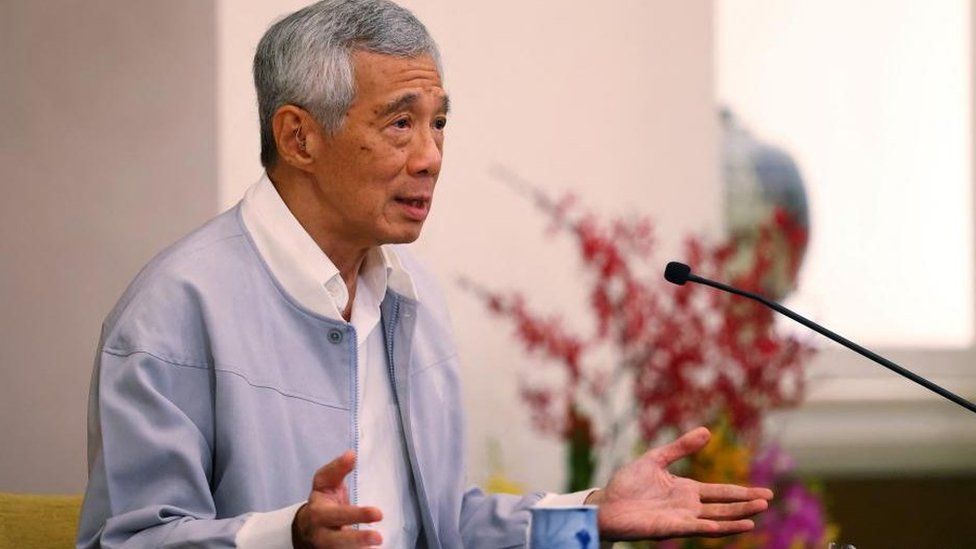
-
Growing global demand for Singaporean artists’ works, but more needs to be done to draw youngsters into sector

However, art institutions here told CNA that buyer demand is not enough to draw young artists into art careers, with a more robust landscape to cultivate and assess talent needed instead.
AN AUDIENCE ABROAD
Local artist Faris Heizer is one such artist whose work is gaining traction overseas.
The raw brushstrokes in his evocative pieces portray the nitty gritty of everyday life in Singapore, and have found their audience halfway across the world.
“I’m slowly, hopefully, penetrating through the American market,” the 25-year-old artist told CNA.
Mr Heizer will get the chance to court that market even further, when he launches his first solo exhibition in Los Angeles in November, which he sees as a milestone in reaching his ultimate goal.
“My goal probably is just showing overseas, and slowly getting a bit of recognition here and there,” he said.
“When I go overseas, I intend to learn a little bit more, and just sort of absorb some of the stuff that they do, and just try to improve as an artist.”
As global economy slows, SEA growth fights on
James Villafuerte remembers a few months ago when onions became a luxury in the Philippines.
Rising inflation, the reopened economy and heavy storms combined to spike in demand and short-circuited supply, sending the price of the pungent vegetable soaring to a 14-year high of $12.8 (700 PHP) per kilogram.
“[It got] to the extent that flight attendants were caught smuggling onions from other countries to bring into the Philippines because of the high price,” said the regional lead economist at the Asian Development Bank (ADB).
Such anecdotes have become symbols of a global economy wracked with uncertainty, as the continuing war in Ukraine and increasingly urgent climate crisis fuel concerns over inflation and rising living costs. But a new report from ADB released this month and regional analysts are giving reasons for Southeast Asian optimism in the face of wider global challenges such as flagging growth numbers and rising inflation.
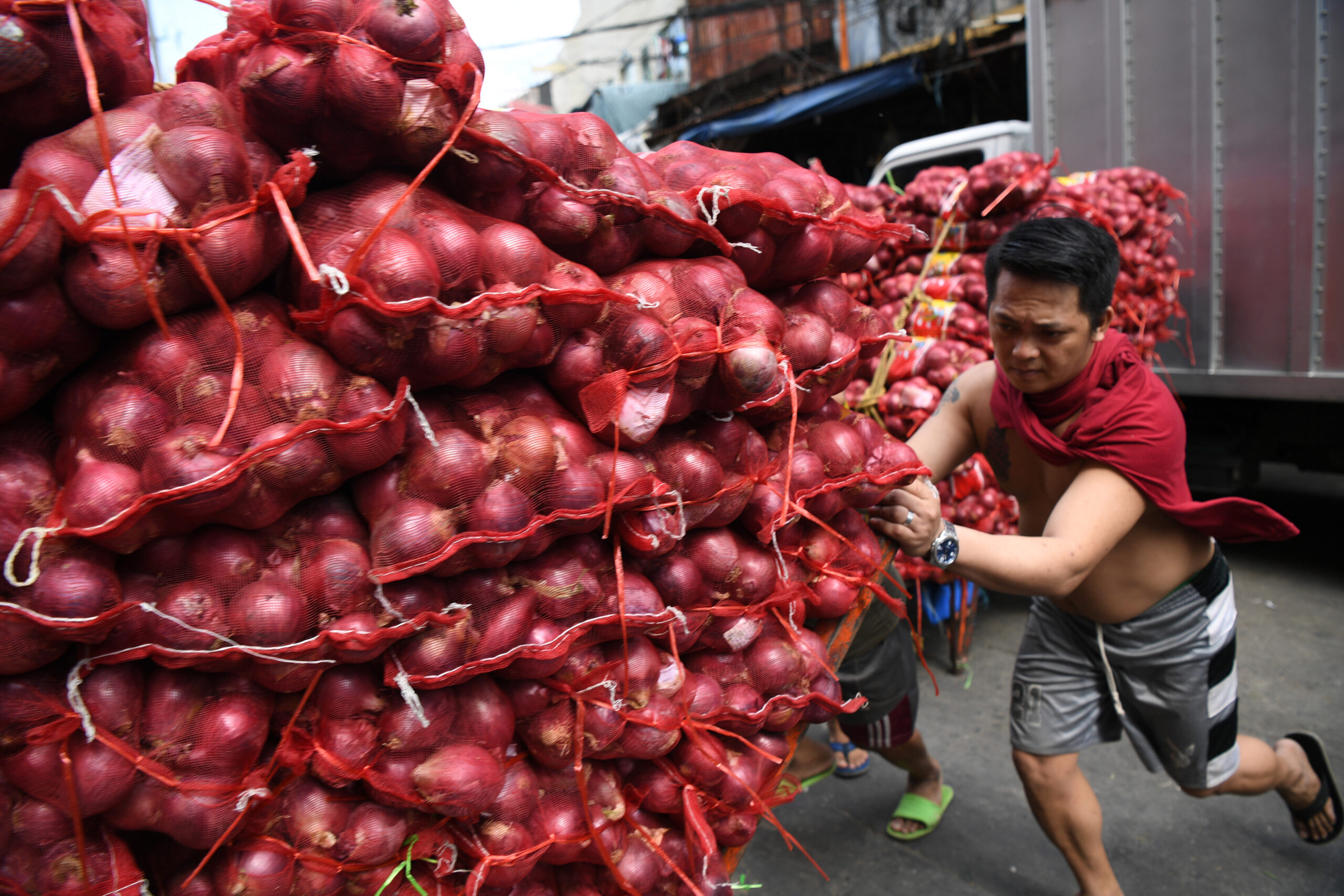
Released Wednesday, the Asian Development Outlook reported a “marginal” downgrade for Southeast Asia’s growth prospects – from 4.7% to 4.6% for 2023 and from 5.0% to 4.9% in 2024 – reflecting weaker global demand for manufactured exports. The latest edition of ADB’s flagship publication focuses on analyses and insights for individual and regional economies across Asia.
Despite the foreboding outlook, experts still believe the region’s interconnectivity, resilient internal markets and the return of international travel will bolster Southeast Asia’s economies against the wider global challenges. Villafuerte noted that while growth projections have slowed, they still exceed those in other subregions and the global average.
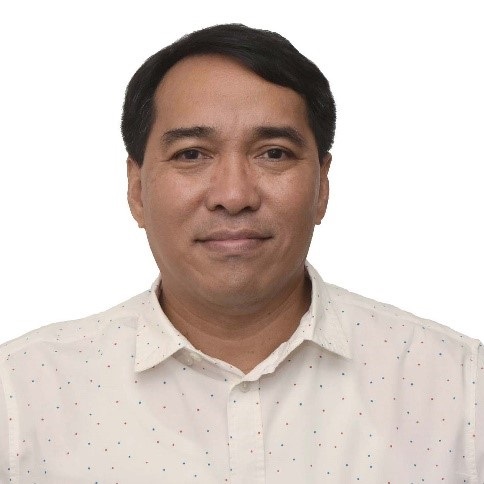
“This is a region of 600 plus million people,” said Villafuerte. “Domestic demand remains intact and ‘revenge travel’ has really seen a huge leap in tourism, arrival and tourism related activities.”
Villafuerte acknowledged that global headwinds from elevated prices had contributed to global inflation. On Tuesday, the Philippines central bank announced that policymakers were prepared to tighten monetary policy in view of continually rising inflation.
His remarks came shortly after Kristalina Georgieva, managing director of the International Monetary Fund (IMF), the UN’s major financial agency, voiced similar concerns at last week’s G20 summit. The IMF’s own growth downgrades were predicted at 3.4% in 2022 to 2.8% in 2023, before settling at 3% in 2024.
Georgieva cautioned that economic activity is slowing, “especially in the manufacturing sector”, and called for a stronger “global financial safety net” to help support less-developed countries. But for now anyway, she said the broader economic system is withstanding the pressure.
“The global economy has shown some resilience,” Georgieva stated. “Despite successive shocks in recent years and the rapid rise in interest rates, global growth – although anaemic by historical standards – remains firmly in positive territory, supported by strong labour markets and robust demand for services.”
A history of interconnected trade
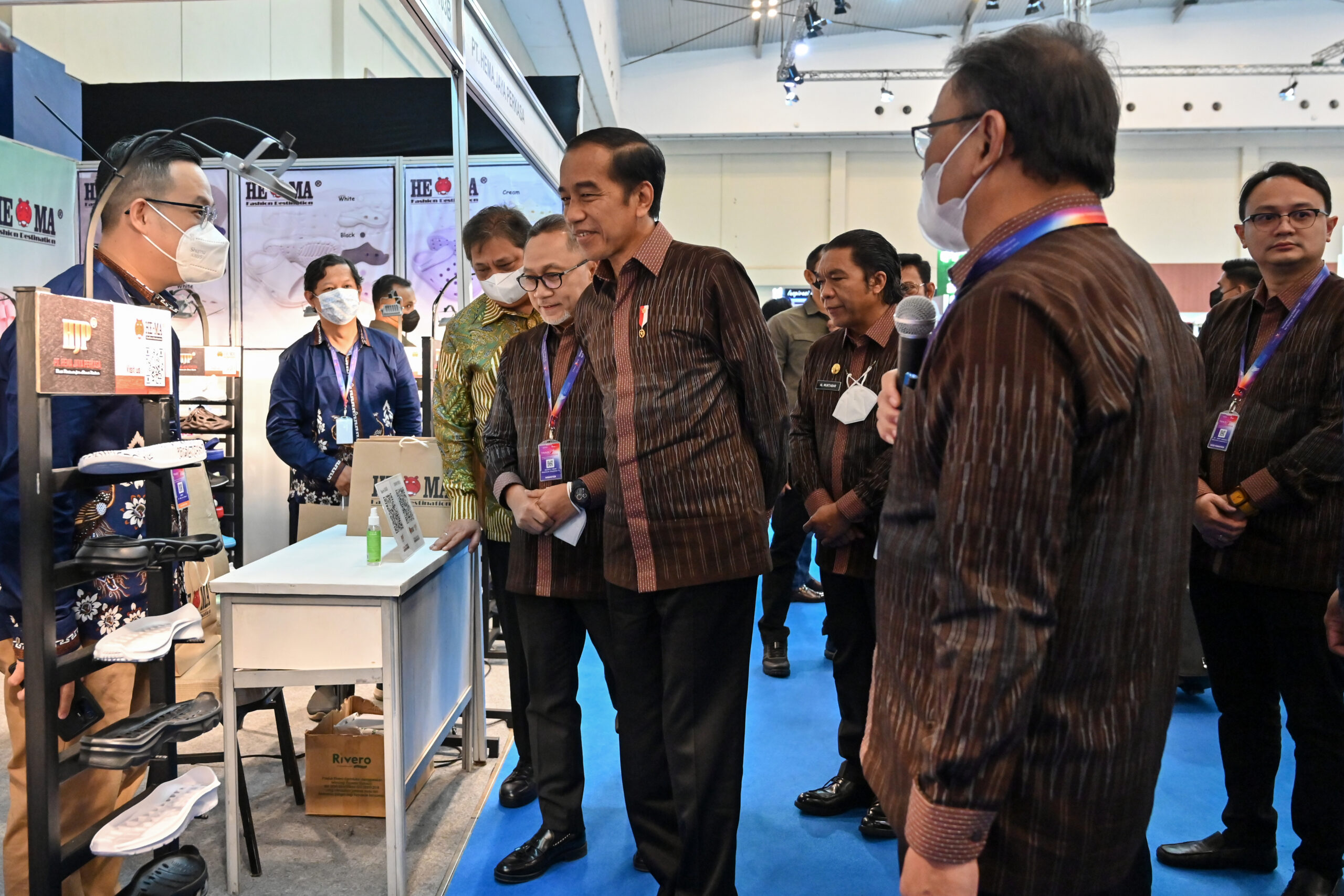
While international trade networks remain important, countries are also looking inwards to their own domestic economies.
According to the ADB report, while global demand for manufactured goods slowed, domestic demand amongst Southeast Asian countries remained intact. Indonesia’s GDP expanded by 5.03% in the first quarter of this year, and economic growth remained steady, despite a slowing in exports.
Strong national economies can help build on a history of intra-regional connectivity, according to Amanda Murphy, head of commercial banking at HSBC.

“Southeast Asia has long been a bastion of free trade and sits at the crossroads of two of the world’s largest free trade agreements: the Regional Comprehensive Economic Partnership (RCEP) and the Comprehensive and Progressive Agreement for Trans-Pacific Partnership (CPTPP),” she told the Globe.
These agreements, formed in 2018 and 2020 respectively, have strengthened bilateral relations within the Asia Pacific area, creating a network of trade avenues with the advantage of geographical proximity. There are signs this is already paying some dividends.
According to a recent HSBC survey, Murphy explained, over the next two years, Asia-Pacific corporations will place 24.4% of their supply chains in Southeast Asia, up from 21.4% in 2020.
“In particular, RCEP, with its tariff reductions and business-friendly rules of origin, is increasing the appeal of Southeast Asia as a manufacturing base, something more corporates are recognising,” she said.
China
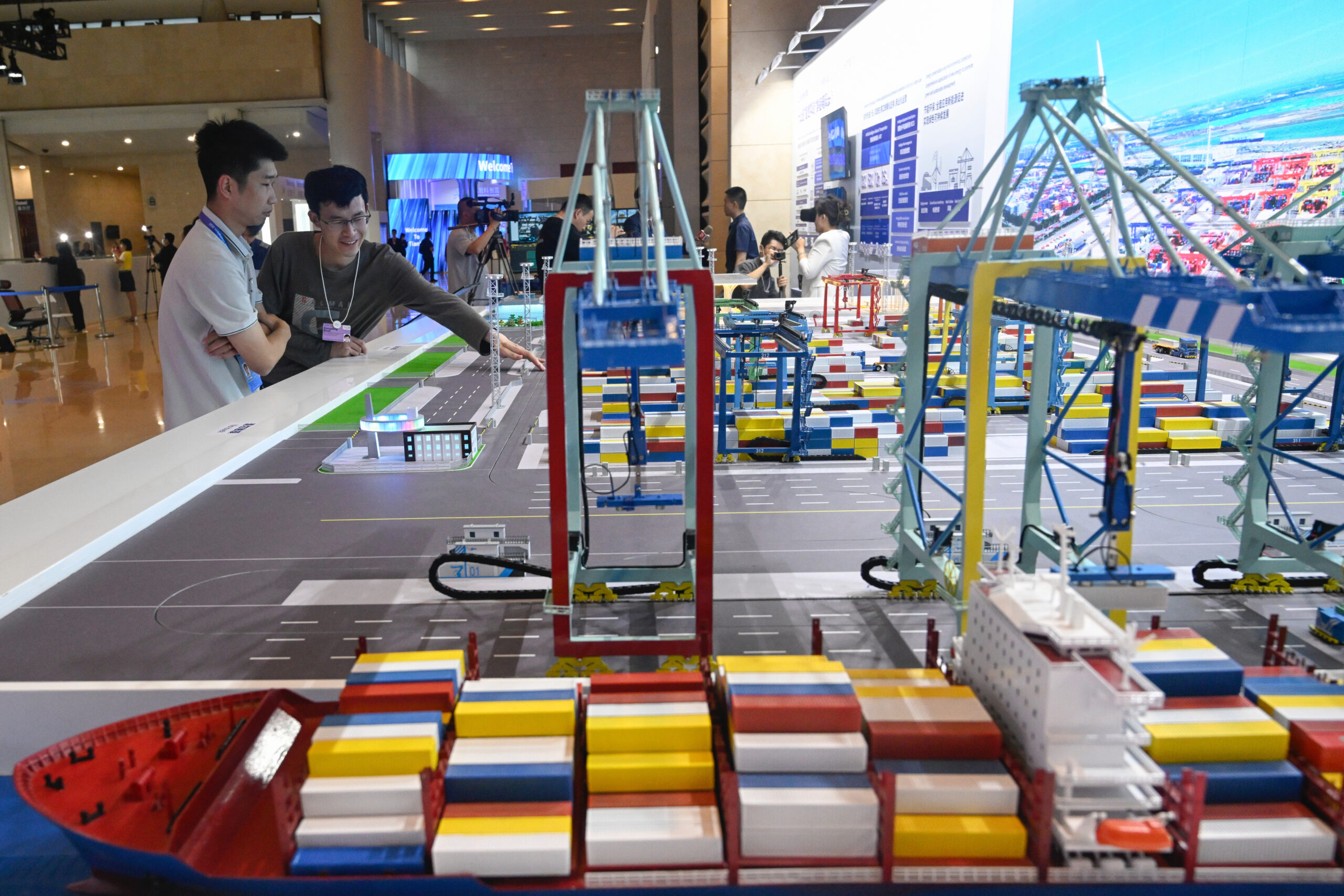
Within the Asia-Pacific region, Southeast Asian countries are planning their next steps with one eye on Beijing. Concerns over China’s slowing economy have caused ripples throughout international markets.
“Weaker growth in the People’s Republic of China has actually weakened the demand for manufactured goods in the region,” said Villafuerte. However some Southeast Asian countries are benefiting from a “China+1” strategy, where global manufacturers look to move production out of China to diversify supply chains and mitigate their risk.
“As businesses seek geographic diversification and adopt the ‘China+1’ strategy, Southeast Asia will continue to gain market share,” said Murphy. “Southeast Asia currently accounts for about 8% of global exports – there is every reason the share can increase.”
China’s exports in June fell to their lowest levels in three years, with a worse-than-expected 12.4% slump from the year before. On the other side of the world, the U.S. also saw a 2.7% export drop at the beginning of the year.
But for Southeast Asia, as trade between superpowers slows, there may be an opportunity to enter new markets and build new relations. As the U.S. and the E.U. have faded as top destinations for Chinese export markets, the East Asian giant has diverged towards other destinations, including Southeast Asia. Chinese exports to ASEAN – the country’s largest trading partner by region – spiked by 20% in October.
For ASEAN’s own export markets, building on critical sectors such as garment manufacturing will help strengthen the bloc’s overall economic outlook despite the global slow-down.
“Excepting [Myanmar], governments in the region are strongly committed to growth, which is fundamental. And this is export-led growth which is even better,” said Gregg Huff, professor of economic development and economic history in Southeast Asia at Oxford University. “Productivity increase is what enables real wages to increase. And if these increase it contributes to political stability.”
Domestic markets
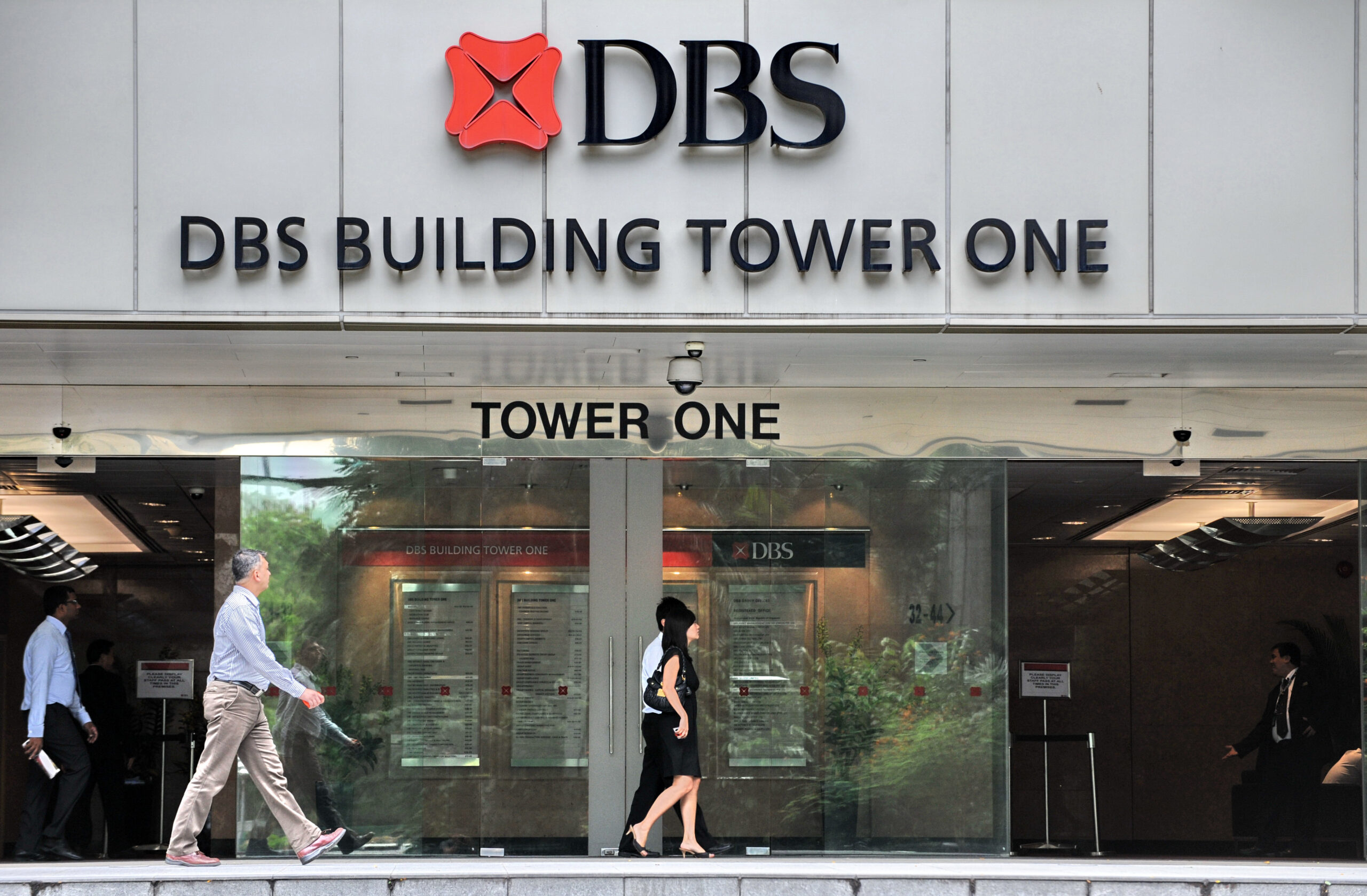
Private consumption was the main driver for economic growth, due to improved labour conditions and income across the region. Some demographics saw an increase in disposable income, according to Singapore’s DBS Bank.
But Elizabeth Huijin Pang, a DBS equity research analyst, was quick to stress at a press briefing that some sectors felt the hit of rising inflation and prices more than others.
“There are still vulnerable groups who have seen the opposite [to our median customers],” she said. “Boomers saw expenses grow faster than income.”
Gig workers were another demographic spotlighted by the bank. DBS data revealed these informal workers to be Singapore’s most financially vulnerable group, with an expense-to-income ratio of 112%, almost double that of a DBS median customer.
“[Gig workers should not be] lagging behind the rest of the population in terms of their longer-term needs,” said Koh Poh Koon, Singapore’s senior minister of state for manpower, at a press conference last week. The remarks come shortly after the government’s agreement to accept recommendations from a workgroup for better representation for gig workers’ needs.
New sectors and opportunities
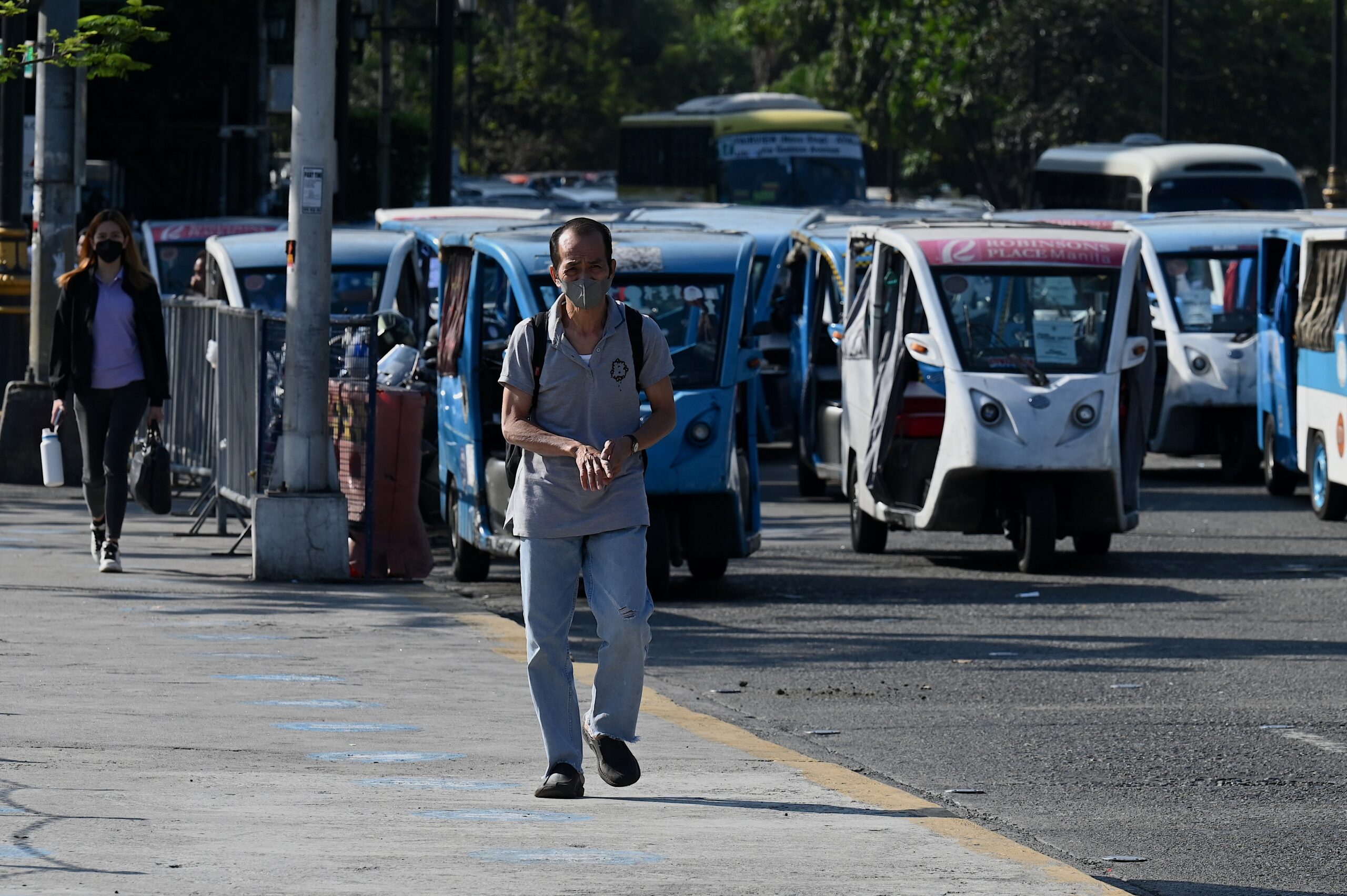
As well as focusing on vulnerable communities, shifts into new sectors are also a key part of Southeast Asia’s economic recovery. The region is one of the most vulnerable to climate change, and despite a recent decrease in green investments, a shift towards more sustainable business structures will likely be a key part of the region’s growth in its next economic era.
ADB has recently pledged $1 billion (54.4 billion PHP) towards the implementation of electric buses in Davao City, the Philippines’ largest road-based public transportation project.
“I think transforming our growth model into a more environmentally sensitive and green model of growth is important,” said Villafuerte. “When we analyse actually some of these green industries, we realise they also generate a substantial amount of jobs. … These will again be investment opportunities and also opportunities for employment.”
For Murphy, the rise of the regional digital economy is another key focus area for growth.
“Given that more than 75% of its population is online it’s not surprising that businesses are transforming their business models to cater to changing customer behaviour,” she said.
The rise of real-time payments and recent initiatives to facilitate cross-border transactions, such as QR code payment agreements between Singapore, Malaysia, Thailand, Indonesia and the Philippines, are helping to boost the region’s economic connectivity.
“When intra-Southeast Asia real-time payments become a reality, we can expect a jump in the velocity of transactions, whether they are business-to-business or business-to-consumer, which in turn will lead to greater economic activity in the region,” said Murphy.
Transitioning through growing pains
As global crises continue, it is up to Southeast Asia’s private and public sectors to proactively plan their own paths forward.
“Three long-term trends that businesses cannot overlook if they want to capture the opportunities in Southeast Asia are what I would call the 3Ts: trade, transition to net zero, and digital transformation,” said Murphy.
Looking ahead to the future, Southeast Asian nations will have to take a proactive approach to adapt to these growing sectors. Moves are already being made at government level. Both Singapore and the Philippines both recently announced their first sovereign ESG (environmental, social and governance) bond and in April, Singaporean finance minister and Deputy Prime Minister Lawrence Wong revealed the Monetary Authority of Singapore’s finance plan for Net-Zero.
For Vilafuerte, looking forward involves looking back. Governments and market response to the Philippines’ onion inflation earlier this year was almost immediate and prices and supply regulated.
“These are temporary shocks and there are natural stabilisers,” he said. “Higher prices and inflation are a sign of a strong recovery. So I think this is just an adjustment period.”
Japan’s population falls while foreign residents rise to record
TOKYO: The population of Japanese citizens decreased at the fastest pace ever while the number of foreign residents rose to a record at nearly 3 million people, government data showed on Wednesday (Jul 26). The data underscores that foreign nationals are playing an even bigger role in Japanese society toContinue Reading
Thousands without power as typhoon Doksuri lashes Philippines
Storm warnings are in place in many parts of the northern island of Luzon, which is home to about half of the Philippines’ 110 million population. Authorities have warned of storm surges, landslides, and damage to infrastructure. Doksuri, locally known as Egay, is the fifth storm to hit the SoutheastContinue Reading

